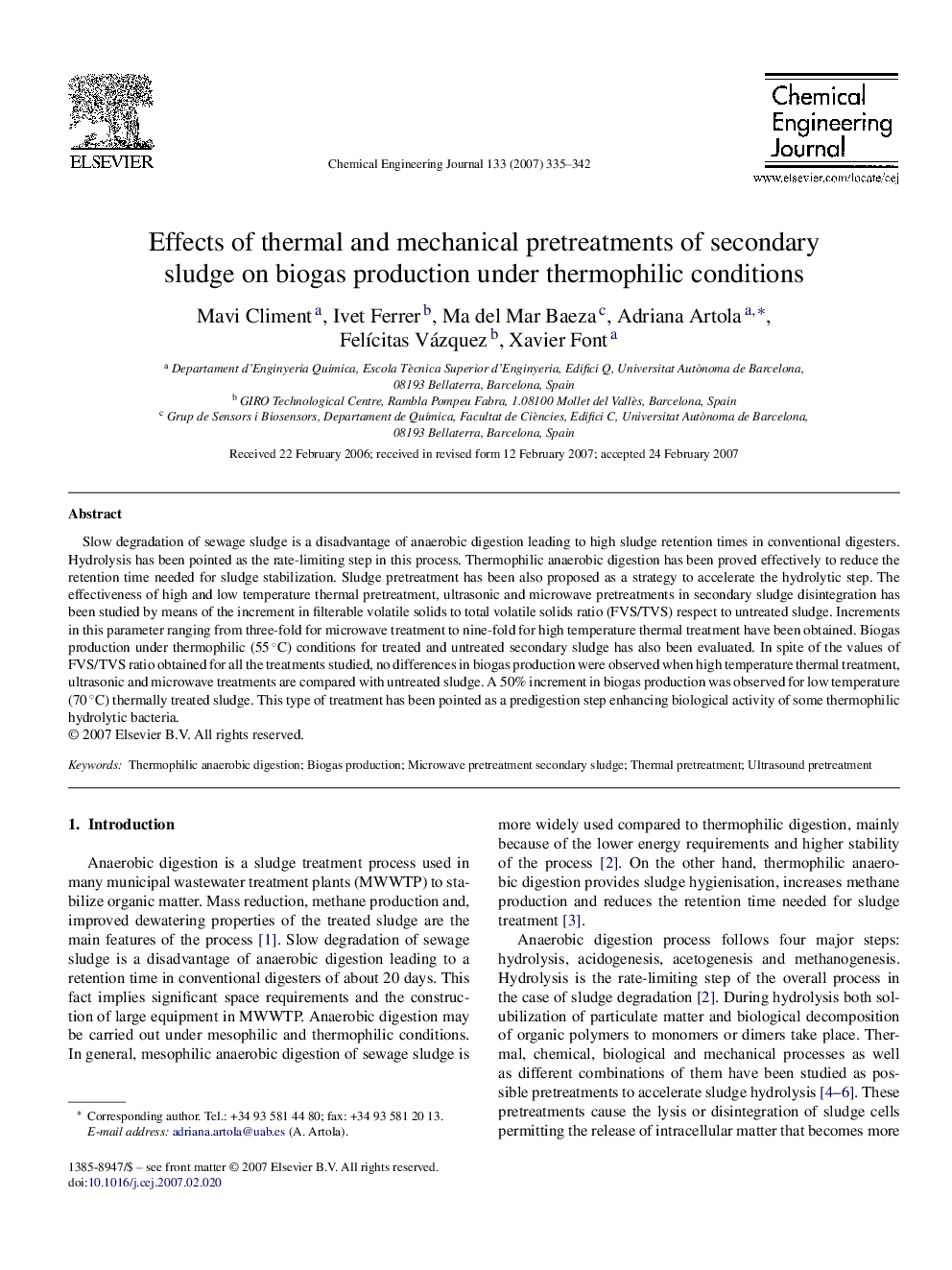| Article ID | Journal | Published Year | Pages | File Type |
|---|---|---|---|---|
| 153698 | Chemical Engineering Journal | 2007 | 8 Pages |
Slow degradation of sewage sludge is a disadvantage of anaerobic digestion leading to high sludge retention times in conventional digesters. Hydrolysis has been pointed as the rate-limiting step in this process. Thermophilic anaerobic digestion has been proved effectively to reduce the retention time needed for sludge stabilization. Sludge pretreatment has been also proposed as a strategy to accelerate the hydrolytic step. The effectiveness of high and low temperature thermal pretreatment, ultrasonic and microwave pretreatments in secondary sludge disintegration has been studied by means of the increment in filterable volatile solids to total volatile solids ratio (FVS/TVS) respect to untreated sludge. Increments in this parameter ranging from three-fold for microwave treatment to nine-fold for high temperature thermal treatment have been obtained. Biogas production under thermophilic (55 °C) conditions for treated and untreated secondary sludge has also been evaluated. In spite of the values of FVS/TVS ratio obtained for all the treatments studied, no differences in biogas production were observed when high temperature thermal treatment, ultrasonic and microwave treatments are compared with untreated sludge. A 50% increment in biogas production was observed for low temperature (70 °C) thermally treated sludge. This type of treatment has been pointed as a predigestion step enhancing biological activity of some thermophilic hydrolytic bacteria.
